PAD London: Eight Mirrors
Reflections on a theme at Pavilion of Art and Design

The Pavilion of Art and Design London marks the annual gathering of Asian, European and American galleries in Berkeley Square. The extraordinarily eclectic range includes creative work from modern masters’ paintings and sculptures through to contemporary design and photography. Among the vast array, mirrors were particularly strong. Here, eight pieces whose reflections on the theme resonated most.

London-based Norwegian designer Kim Thome presented his “Circus, Mirror” (2012). Encircled by a deep black frame with multicolored neon dots on either side, this two-way mirror layers the dots in its reflection to create a clever optical illusion of a colored pattern. The “Circus, Mirror,” which evokes the jumping through hoops stunts of the big top, is part of Thome’s Reflection series that was shortlisted for the PAD Prize this year. The award celebrates young design talent in the UK and their “ability to reflect the artistic intent of design.”
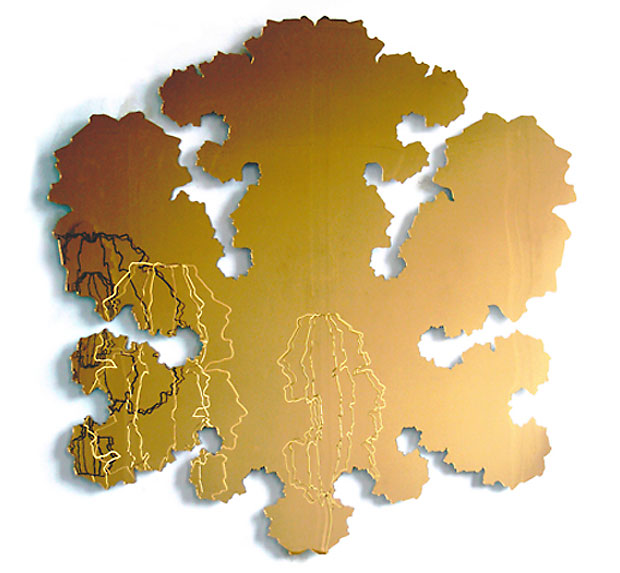
More optical tricks abound in Paul Hosking‘s gold Rorschach mirror at Gallery Fumi with a design inspired by the forms created in Rorschach’s famous butterfly-like ink blot psychological tests. Hosking plays with this reference in more than the overall form of the mirror. If you look closely at the detail of the mirror’s edge, you can see human profiles emerge. With the right spotlight on the mirror, these forms cast unsettling shadows of screaming heads on to the wall behind it.
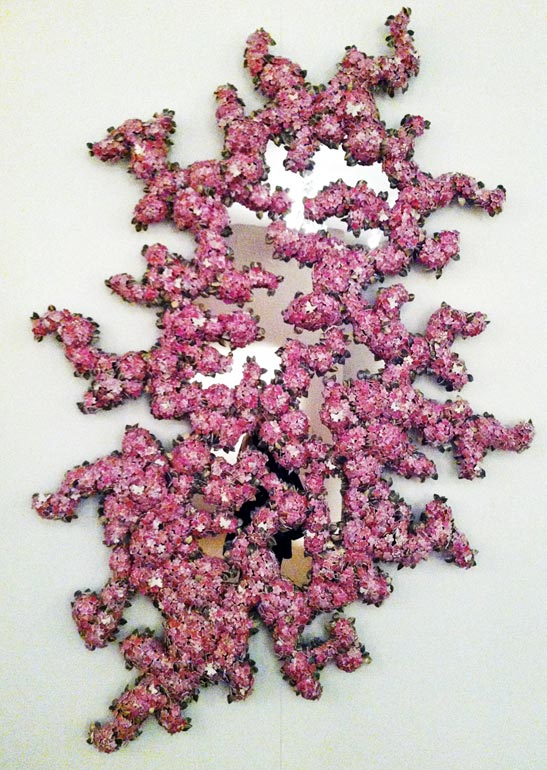
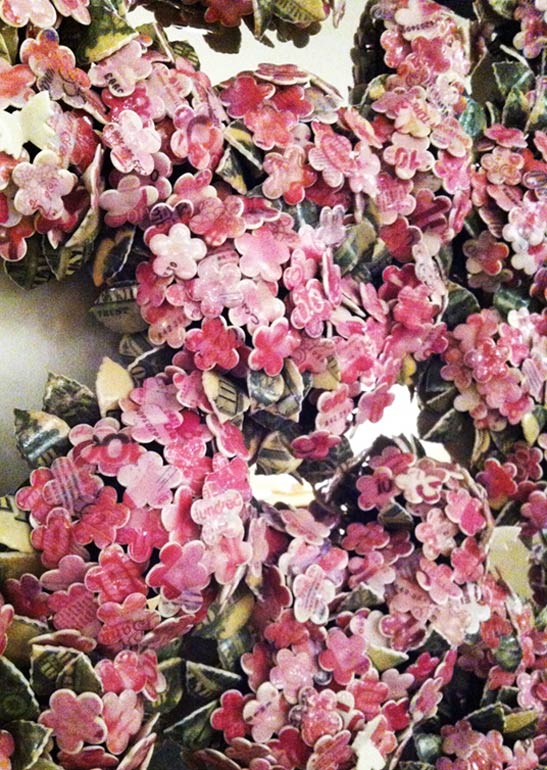
Also working with the psychology of human nature is the British ceramic artist Barnaby Barford. The first in his new series of mirrors on the Seven Deadly Sins, Avarice, was the show-stopping piece at the David Gill Gallery. The 9,000 porcelain flowers “embellishing the mirror like a creeping vine”, resemble an almost saccharine pink from a distance, but up close you see they are decorated with fragmented images of paper currency. Barford describes the work as exploring our “insatiable appetite” for money, and our problematic and “obsessive ways to acquire more.”
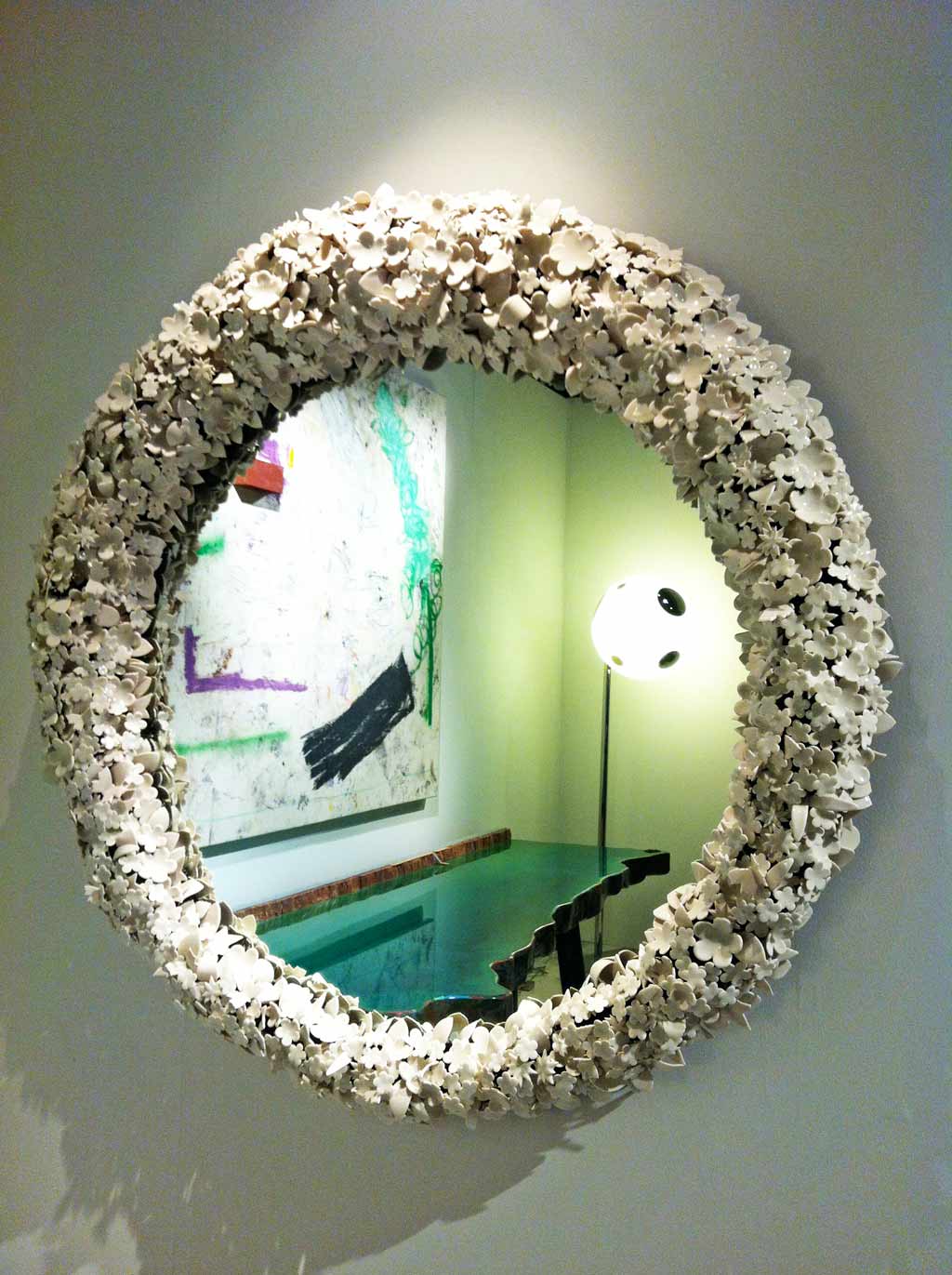
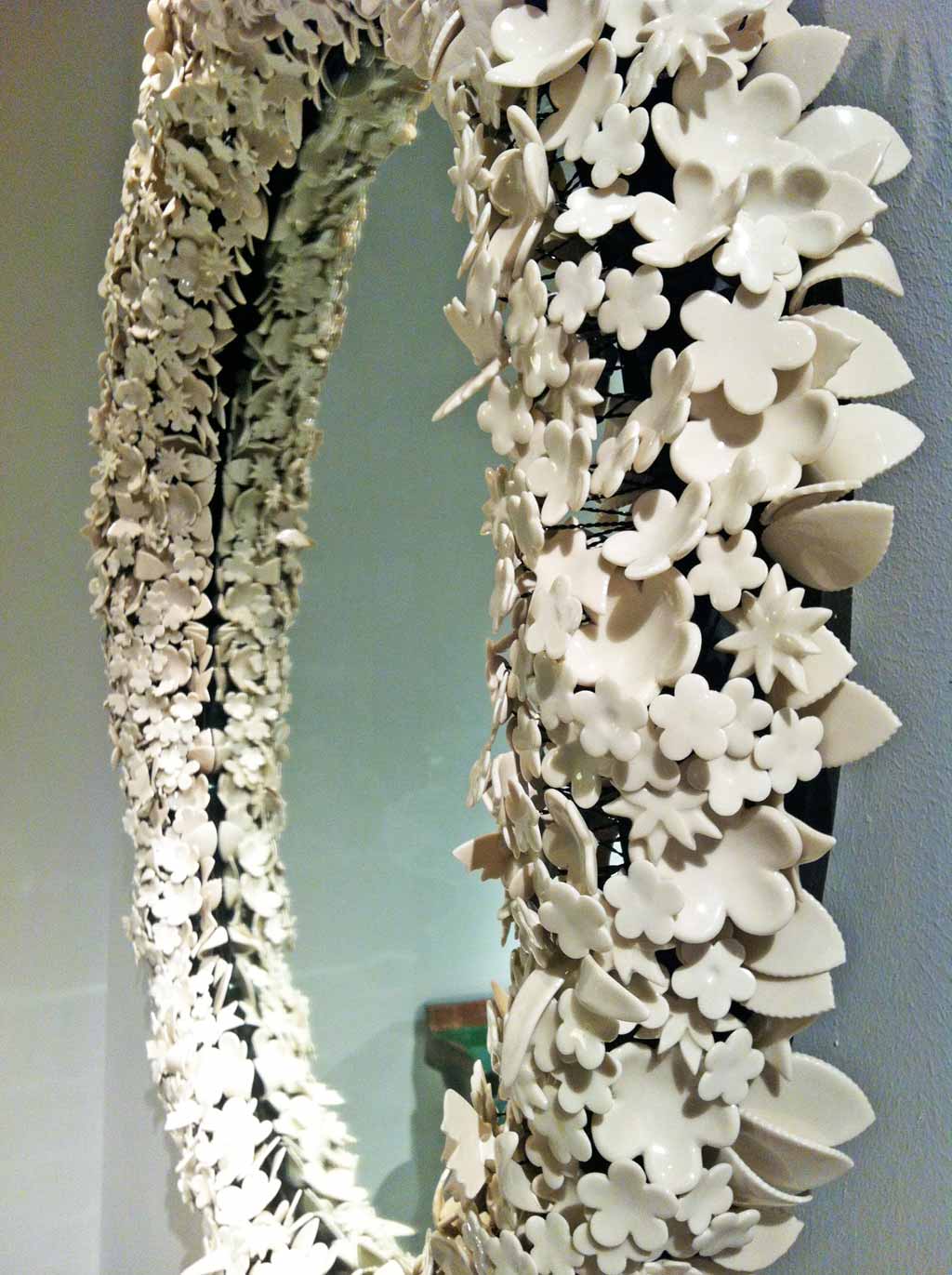
On the other side of the wall from “Avarice” was a second mirror by Barford called “Mirror, Mirror,” evoking the good and evil of seeking beauty in the fairytale Snow White. Designed to be batch-produced—unlike the one-off “Avarice”—the edge of the round mirror is decorated with thousands of white porcelain flowers.
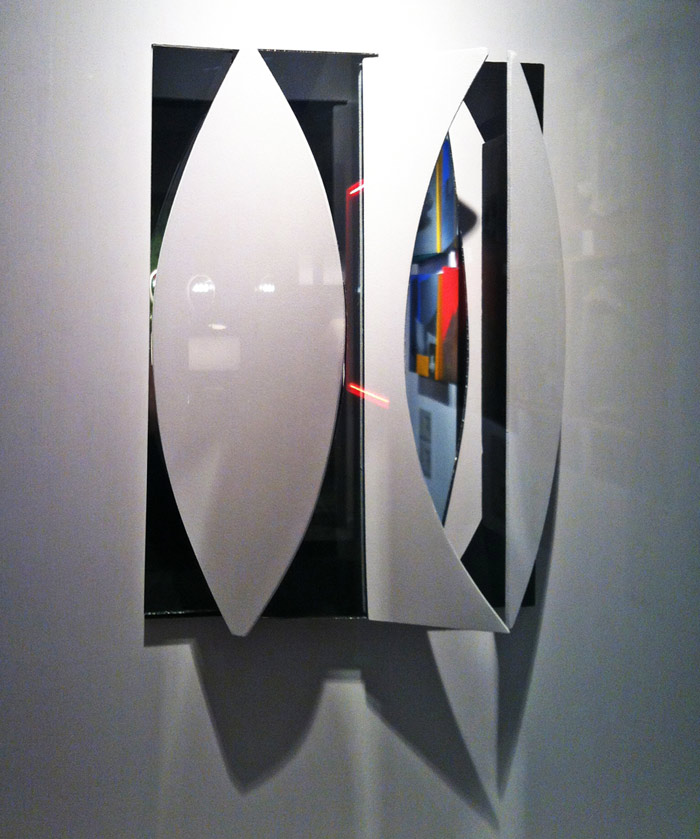
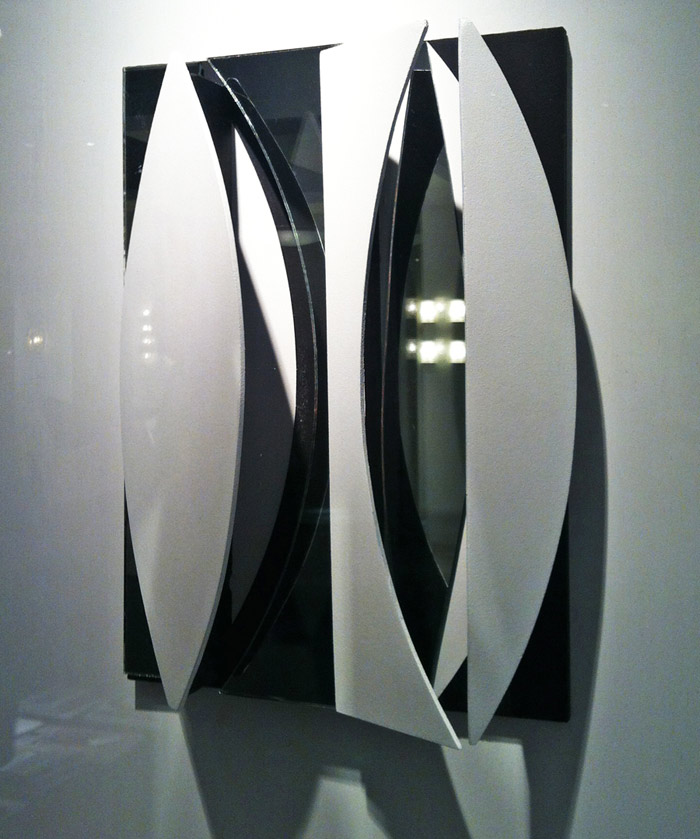
At the opposite end of the design spectrum from ornate is established Swiss sculptor Christian Megert and his formal “untitled” assemblage of mirror, wood and acrylic. This work, shown by the Mayor Gallery, caught our eye for its strikingly simple black and white cut-out forms, which are made visually complex by the inserted mirror sections reflecting the work’s colourful surroundings.

Probably the subtlest mirrored work on show at PAD was Study O Portable‘s “Quartz” mirrors. Installed high on the wall of the Caroline Van Hoek stand were eight pieces of quartz, each sliced, polished and silvered. The antique, decorative nature of the work masks the high-tech inspiration, which the Dutch and Japanese design partners describe as “a reflection through a technological myth.” It references the essential role quartz crystals play in media devices such as radios, televisions, telephones and computers. According to the designers, they “all rely on the mechanical property of quartz crystals in the shape of crystal oscillators. With the effect that translates electricity into oscillation and back, it enables us to see ourselves through the objects we create.”
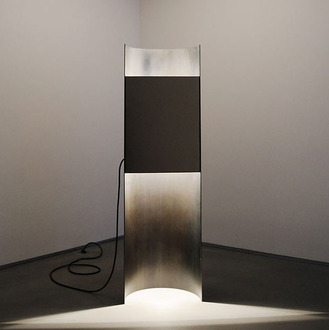
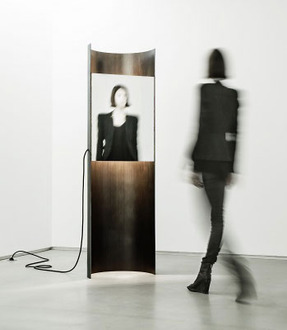
Moving the minimal mirrored form to a whole new scale was Johanna Grawunder‘s imposing steel “Halfpipe” sculpture at theCarpenter’s Gallery Workshop. This Milan-based American designer is known for her large-scale lighting installations, which have been described as “luminous pieces of functional micro-architecture.” With “Halfpipe” she has created a monumental standing lamp. The light sits inside the tall, brushed steel channel and is masked by a sealed front section that is so highly polished it works as a mirror.
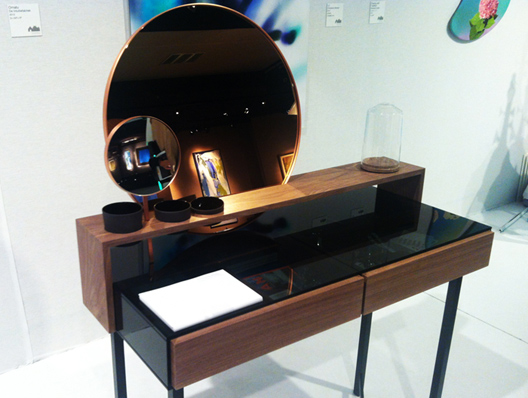
Uniting the ornate and the minimal strands of design at PAD London is the Ornatu dressing table by Dutch designers Die Instuitiefabriek at Priveekollektie. These four female designers, who graduated in 2009 from the Design Academy Eindhoven, are now based in Amsterdam, making beautiful but functional furniture. They describe the dressing table, with is combination of walnut wood, copper-hued mirror, ceramic vases and smoked glass as a “flirtatious combination of materials that provides the perfect place to spend one’s intimate moments of the day.” Ornatu is part of their Virtu series which includes a writing desk, Scrinium and a collectors box called Curio.
PAD London runs between 10-14 October 2012 at the Berkeley Square galleries.
Images by Leonora Oppenheim and courtesy of the galleries











